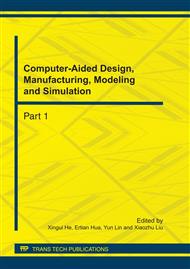p.442
p.448
p.454
p.461
p.465
p.470
p.475
p.481
p.486
Finite Element Analysis on the Mechanism of Axial Turning-Grinding of Engineering Ceramics
Abstract:
Axial turning-grinding is a high efficient and low cost method of processing engineering ceramics. During the research of its processing mechanism, by choosing diamond grits and alumina workpiece to creat model and using ls-dyna modeling software to simulate the stress changes and strain of the generation and development in the process of workpiece to study the mechanism of its processing, and analyzes the feasibility of this method combined with experimental results.
Info:
Periodical:
Pages:
465-469
Citation:
Online since:
August 2011
Authors:
Price:
Сopyright:
© 2011 Trans Tech Publications Ltd. All Rights Reserved
Share:
Citation:


